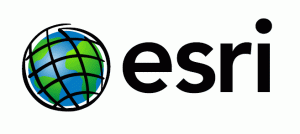With all the data that local governments have at their fingertips, it can be difficult to determine the best way to implement new policies. Knowing a city has a problem is one thing, but solving it is another issue entirely.
Recent years have seen a rise in local governments using geographic information systems (GIS) to address issues like homelessness, blight and the opioid crisis. Christopher Thomas, Director of Government Markets at Esri, discussed the technology during GovLoop’s recent online training, “Overcoming Today’s Social Inequities with Technology.”
Thomas pointed to the municipal benefits of GIS in narrowing wealth, income, resource and health disparities, among others. The technology offers an opportunity to visualize and understand troves of data in ways never seen before. That, in turn, can lead to departmental collaboration that otherwise wouldn’t happen, he added.
As an example, Thomas referenced the work of Los Angeles City Controller Ron Galperin, the driving force behind GeoPanel.LA, an online tool that maps a variety of data sets, including for marijuana dispensaries, available LGBTQ youth resources and city park grades. Galperin and his office have used data to help city officials address problems at a fundamental level.
Galperin mapped out all the domestic violence issues and calls for service for the city of Los Angeles, Thomas explained. He then looked at the root causes for domestic violence, and oftentimes it had to do with the poor economy or other social programs that weren’t being looked at. Galperin was able to come back with recommendations and an explanation as to what it was costing the city by not addressing the root causes of domestic violence, what it was costing the city to send out law enforcement and what it was costing to not have the right programs in place.
“It’s really intriguing, his perspective on taking very basic information, laying it out, and posing a new set of questions,” Thomas said.
He encouraged government officials to treat social crises like they would a public health crisis. He laid out the following six steps that agencies can take to put GIS solutions to work.
1. Organize existing data.
Government bodies should look to bring the information they already have into one location. Oftentimes, officials can draw fresh conclusions just from bringing uniformity to disparate data sets, Thomas said.
2. Collect new data.
If a government wants to stay abreast of complicated problems, it’s important to collect fresh data. That can mean sending a drone out to identify homeless encampments or using cost-effective mobile field data collection.
“Collecting and supplementing information has never been easier,” he said.
3. Communicate your findings.
Then comes the need for visualization. After all, spreadsheets chock-full of information are rarely considered welcoming.
Esri’s ArcGIS Story Maps provide a solution for this. They make it easy to illustrate data in more narrative, interpretable ways.
4. Deploy tactics.
If step three is about making the information digestible, step four is about putting that digestible information in to action. Esri has developed more than 500 applications that help governments combat their social problems. For example, a city could use ArcGIS to build a resource map that shows where homeless shelters and missions are located.
Thomas explained that these kinds of solutions work for all sorts of local governments.
“We’re learning that there are lessons that are transferable from one group to the other,” he said.
5. Inform decision makers.
Next comes the need to communicate with others around government. Esri’s ArcGIS has a dashboard function that can help organize the details of a project. It makes it easy to see how decisions alter cost and workforce.
6. Engage citizens.
This final step gets to the core of government: improving the lives of citizens. Residents within a local government’s jurisdiction should know about the resources available to them. And, depending on what the project entails, they may be able to help crowdsource it.
“The point is that it’s not just data,” Thomas said. “You can make the information personal in a way that changes the dialogue.”






Leave a Reply
You must be logged in to post a comment.